Hotel Keyforest Hokuto, Where Keith Haring Meets the Jomon Era
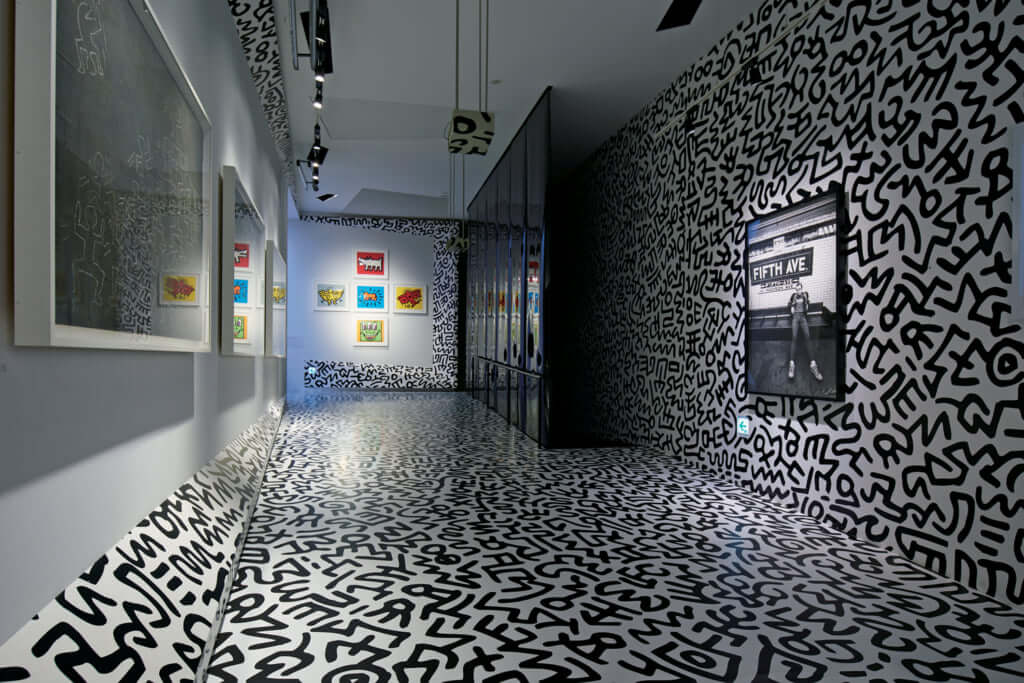
The ‘Gallery of Growing’ inside the building. There is a gentle slope as you go further inside. On the wall there is a photograph of Keith Haring at a subway station.
Keith Haring is, alongside Andy Warhol and Jean-Michel Basquiat, one of the street artists that really represents 1980s New York. The world’s first art gallery dedicated solely to exhibiting the works of Keith Haring is located in Kobuchisawa, Yamanashi.
The ‘Nakamura Keith Haring Collection,’ which is surrounded by the beautiful scenery of the Yatsugatake Mountains, was originally established by gallery director Kazuo Nakamura as a place for his personal Keith Haring collection. Nakamura thought that he would like to show his collection publicly, and when discussing opening a gallery, he thought of Yamanashi. As he was taken in by the vitality of Haring’s works, rather than their urban nature, Nakamura decided to locate the gallery in Kobuchisawa. Kobuchisawa is in Nakamura’s home prefecture, where many Jomon Era ruins have been excavated, and is a place that is overflowing with the vitality of nature.
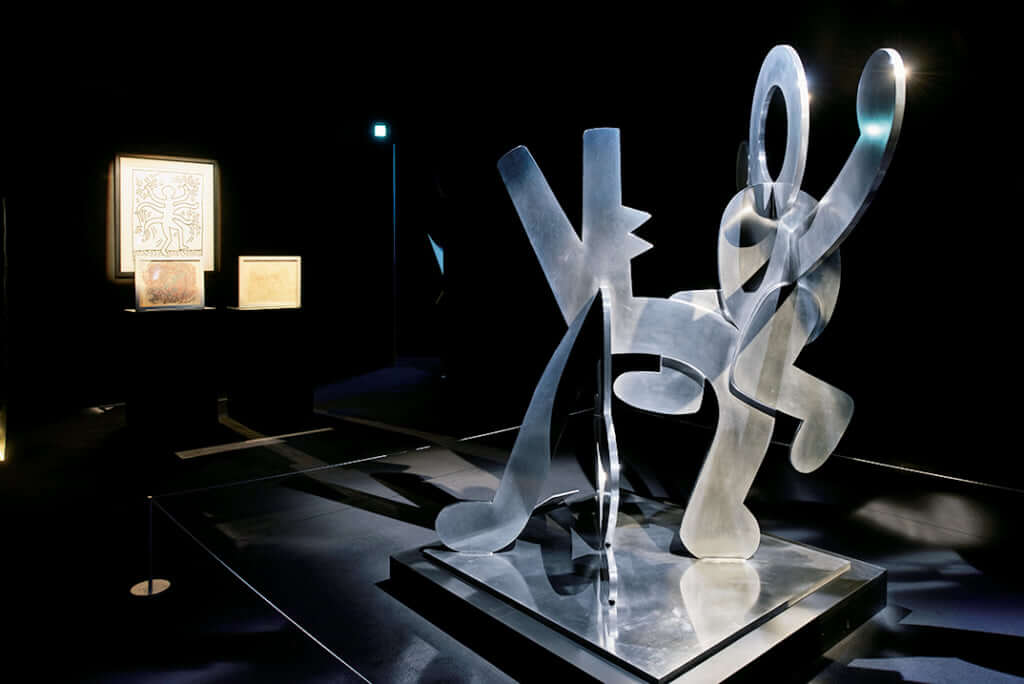
‘Untitled (Figure Balancing on Dog),’ 1989. In the ‘Room of Darkness,’ the particular silver colour of aluminum emits light. Many different expressions are created depending on the angle you are looking from.
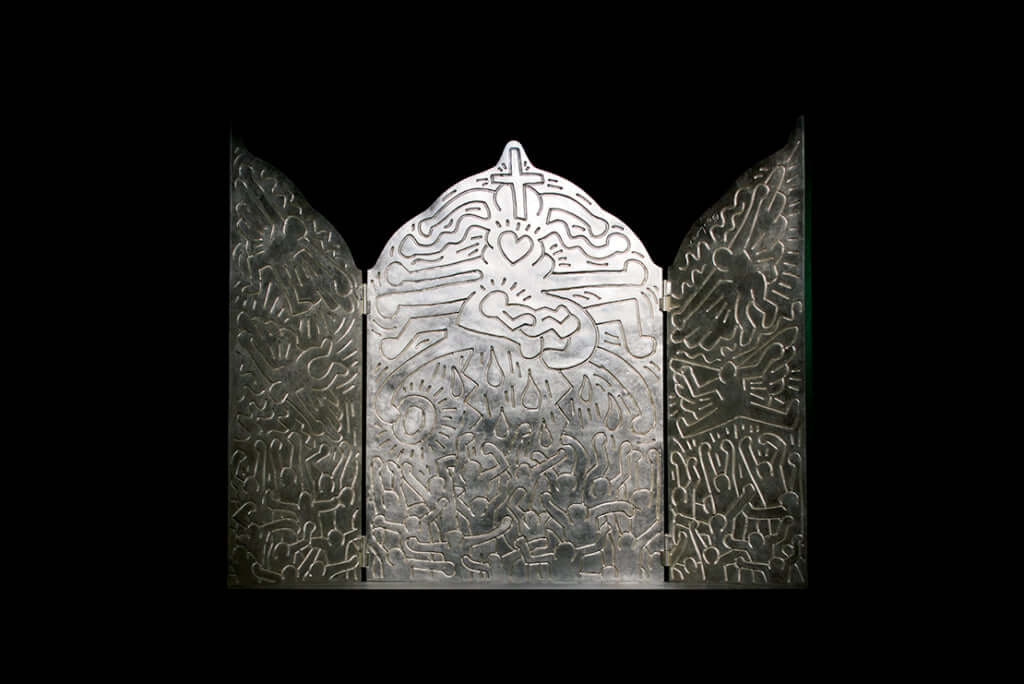
‘Altarpiece: The Life of Christ,’ 1990. One version of a work that is dotted around the world; in the St. John’s Cathedral in New York, and in Grace Cathedral in San Francisco.
If you step foot inside the modern building and follow the designated route you will be met with the ‘Slope to Darkness,’ which was constructed to work with the natural terrain. If you descend that slope, which is adorned with suspended neon signs, you will arrive at the ‘Room of Darkness.’ Here is a collection of works that are perhaps different from what immediately comes to mind when thinking about Haring; for example, sculptures made from polished, uncoloured aluminum.
As you progress farther along the route you come to the ‘Gallery of Growing,’ where art typical of Haring’s style is hung on the wall. Here you can see representative works that will look familiar to anyone. Beyond this is the ‘Room of Hope,’ a sizeable space with a high ceiling that holds large-scale works. From this level of completeness, which exceeds all expectations, you will feel a great degree of satisfaction. It is easy to understand why art lovers from all over the world come here.
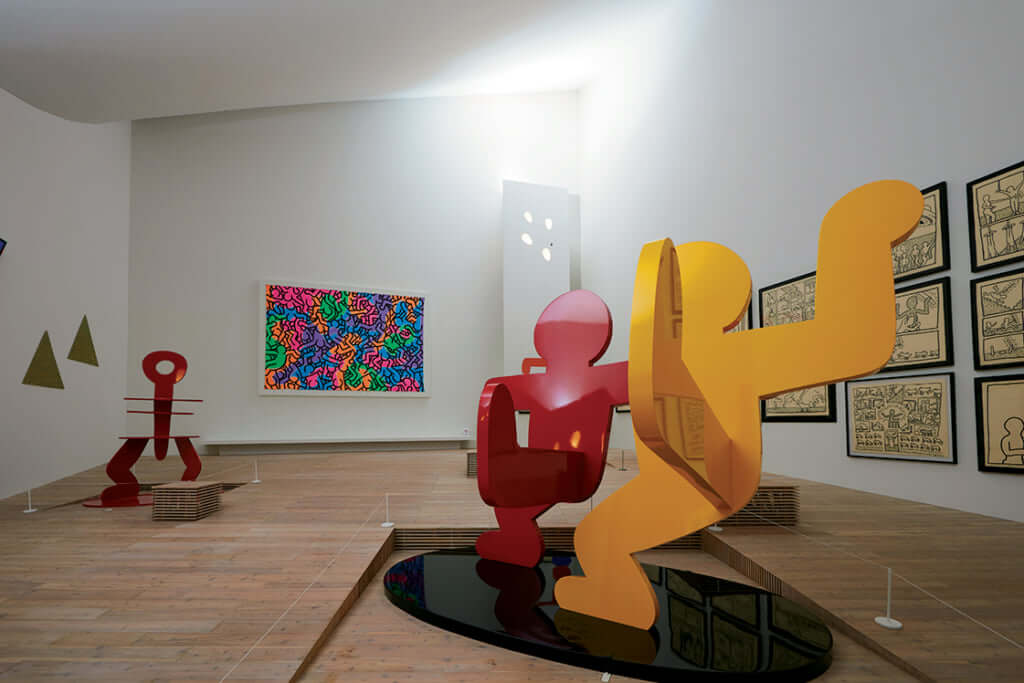
In the main space, ‘The Room of Hope,’ large-scale works over two metres tall are exhibited. There is a freshness to the sculptural works of Keith Haring, who is mainly known for drawings.
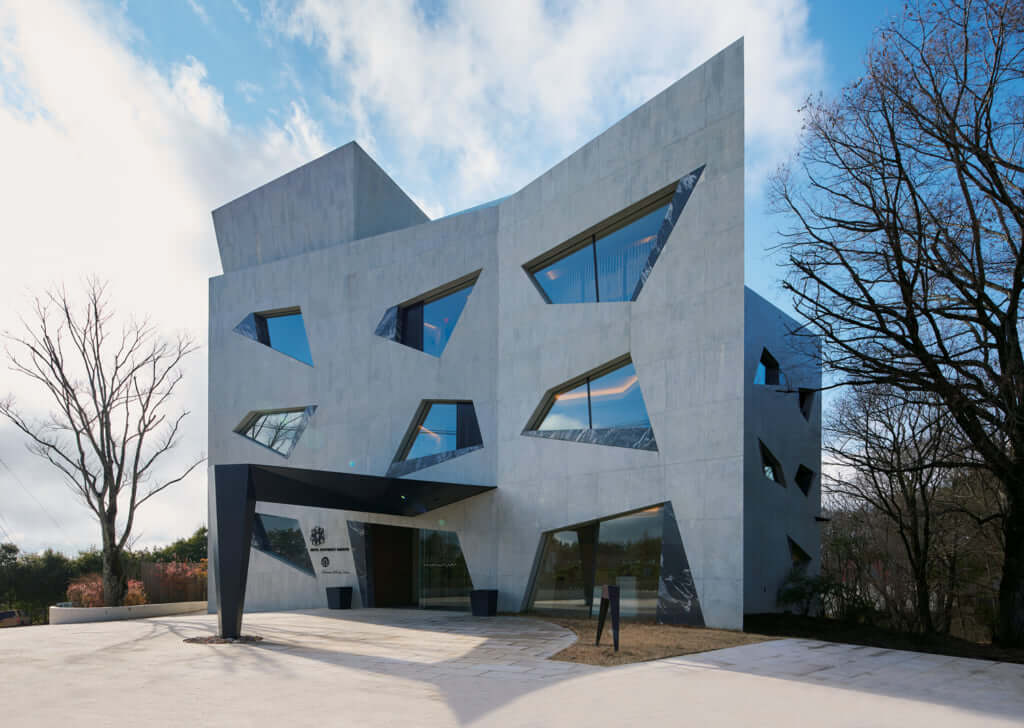
The outline that protrudes in all directions and the trapezium windows made from all different sizes of glass and marble come together to form an eye-catching hotel exterior.
‘Hotel Keyforest Hokuto’ was established jointly with this gallery. The hotel manager, Takaki Hara, explains that “This hotel was built thinking that the visitors who come to the gallery need a place that welcomes them with the same worldview. Guests receive free entry to the gallery when staying at the hotel, so some people make a round trip just to spend time at the hotel and gallery.”
The impactful design of the building was completed by the same architect who designed the gallery, Atsushi Kitagawara. It is said that the architectural concept of this hotel was to combine opposing elements, such as ‘architecture and nature’ and ‘modern and primitive.’ The hotel windows, which take a trapezium as a base and combine all different sizes of glass and marble, were based on Kitagawara’s conceptions of the Jomon Era. The names of the six rooms, including ‘Uose’ and ‘Mitsu,’ are all taken from ‘Woshite Bunken,’ an ancient manuscript written in the language of the Jomon Era.
It has been four years since the hotel opened and nowadays there are many people who are charmed by the establishment itself and come back for multiple stays. To be immersed in contemporary art and Jomon romanticism and have the senses stimulated. There can’t be many hotels like this.
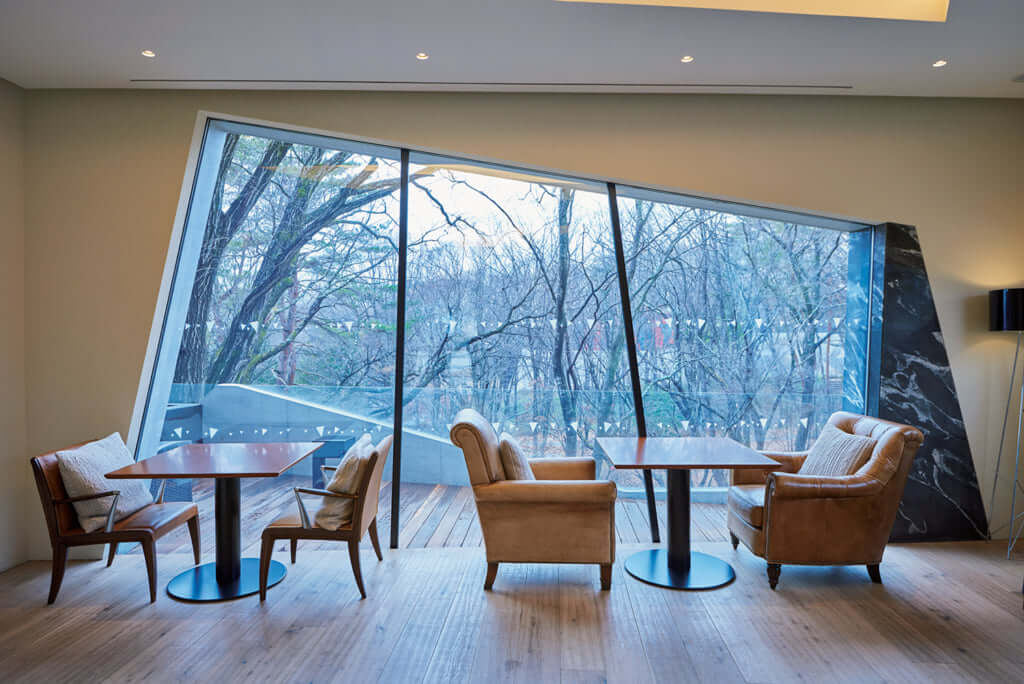
The hotel lounge. The disproportionate trapezium windows are found at every turn around the building. They are all different shapes, as nothing in the natural world is exactly the same shape.
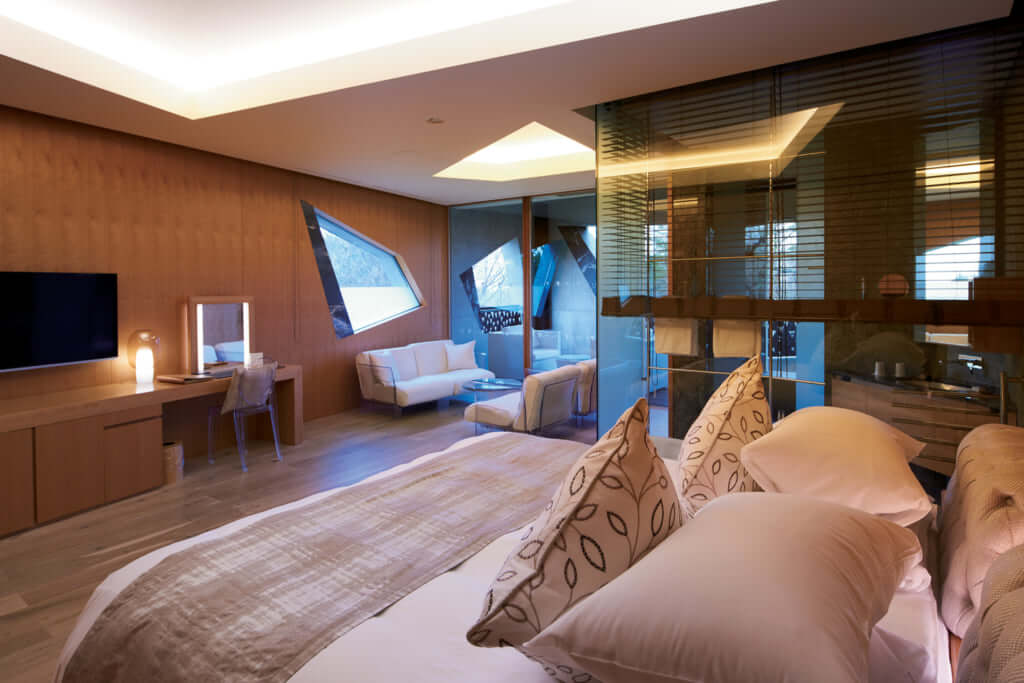
The furniture and lighting are arranged according to the name of the room. The name of the double-type room is ‘Mitsu,’ which means water, and so the interior has a feeling of transparency.
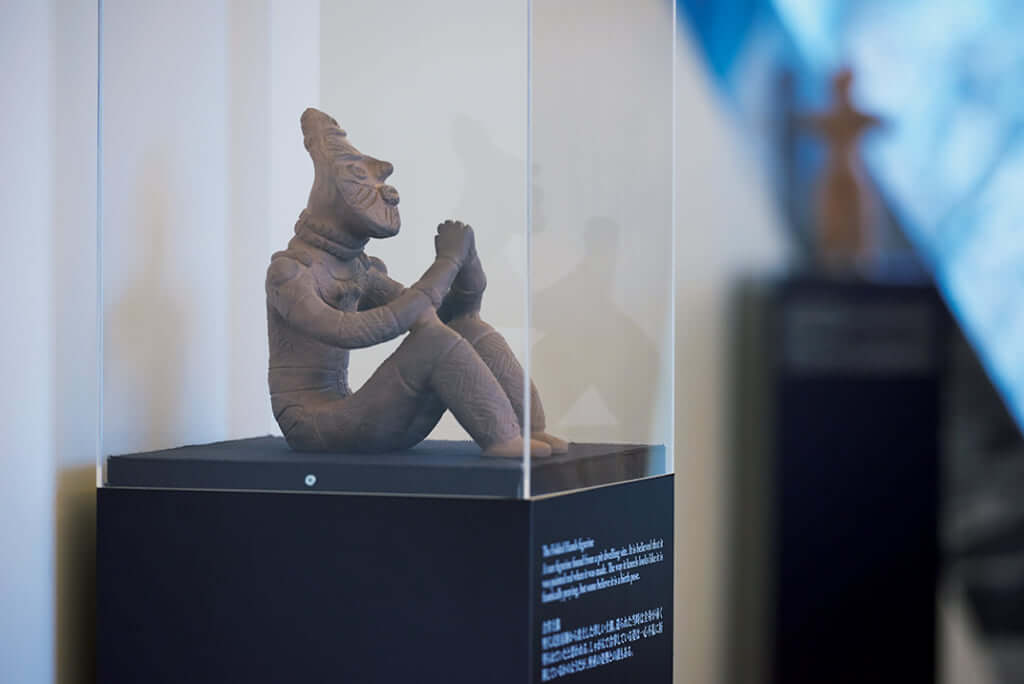
There are many Jomon earthenware replicas exhibited in the public spaces, such as the corridors and lobby. These are items collected by the owner, Nakamura, and pay respect to Kobuchisawa, where Jomon culture flourished a long, long time ago.
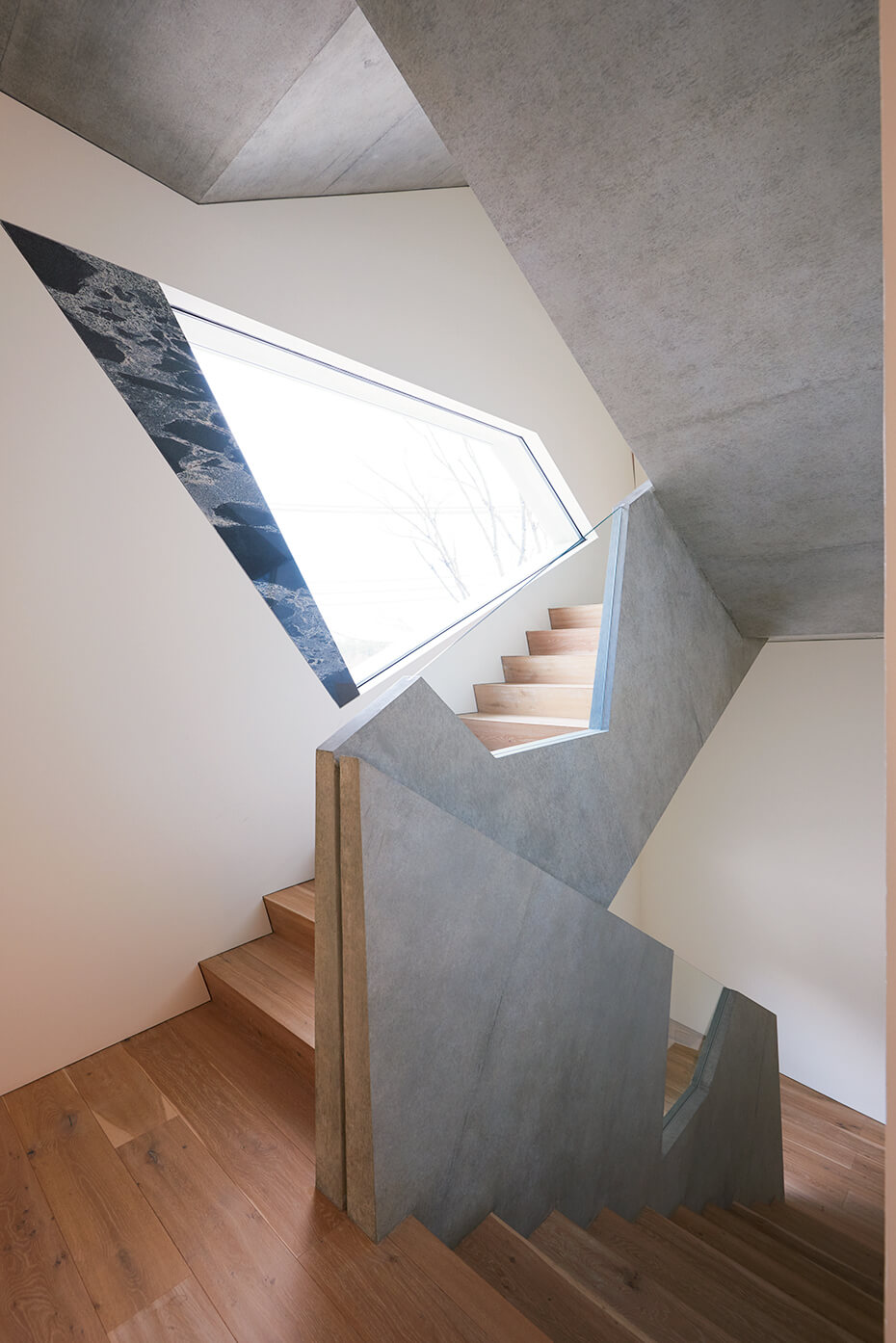
The trapezium shapes are found not just in the windows, but also in the staircases. Being conscious of the range of the natural light and the movement of the line of sight, these are works that are typical of Kitagawara, who always pays careful attention to details.

If you make a reservation you can privately enjoy an open-air bath with hot-spring water flowing from the source. You can spend a luxurious time, undisturbed, looking out at the abundant forest and blue skies.
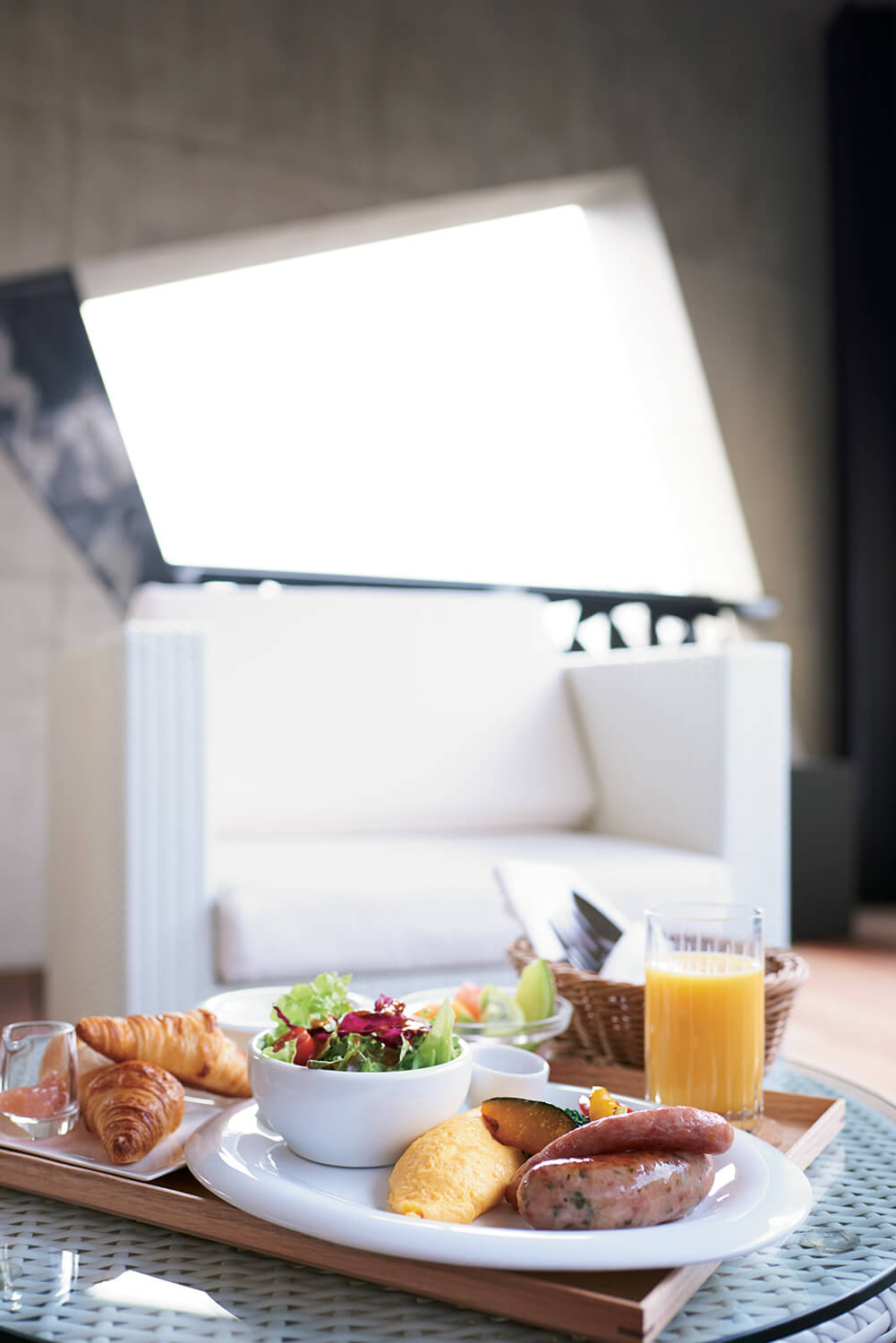
If you make a request, you can eat meals on the spacious terrace of your room. This is a service that pleases those who want a secluded stay. The breakfast menu consists of dishes made using ingredients from the Yatsugatake Nanroku area.
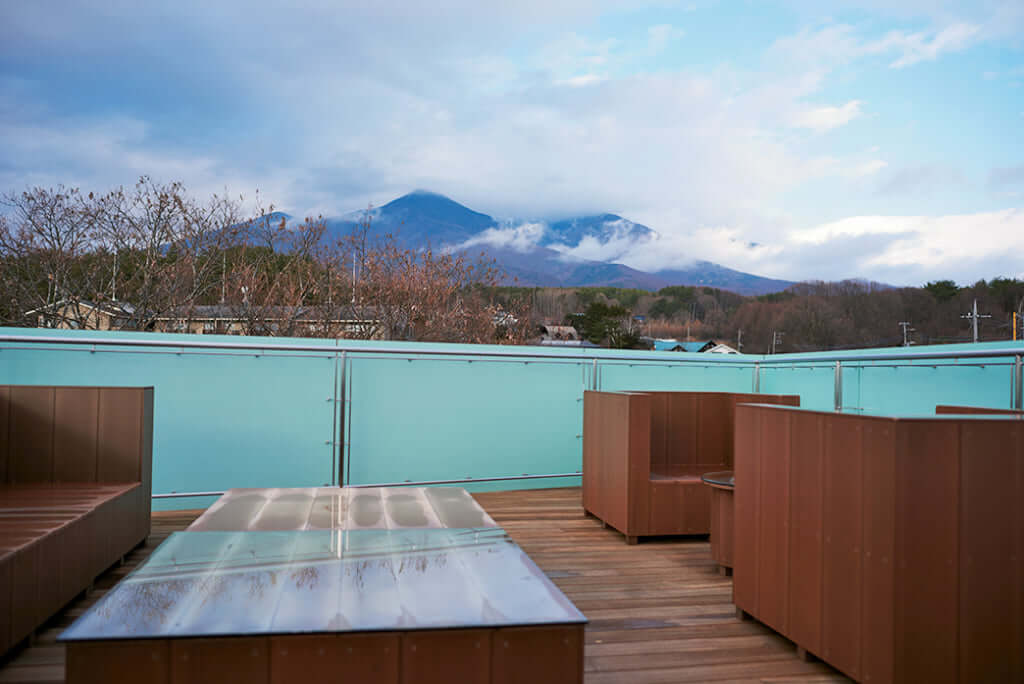
From the roof terrace, which is accessible 24 hours a day, you can enjoy a panoramic view overlooking magnificent mountains, such as the Southern Alps and Mount Fuji. At night there is a never-ending starry sky.
Hotel Keyforest Hokuto
10248-16 Kobuchisawa-cho, Hokuto City, Yamanashi Prefecture
Tel: 0551 - 36 - 8755
Total Rooms: 6 / Double room Use = From ¥38,335 (tax included)
Access: Approximately six minutes by bus from JR Kobuchisawa Station, approximately five minutes by car from Kobuchisawa IC
www.kob-art.com/hotelTRENDING
-
Ishiuchi Miyako, A Singular Perspective on Women
Recipient of the 2024 Women in Motion Award, the photographer creates intimate portraits of women through the objects they left behind.

-
Recipe for Ichiraku Ramen from ‘Naruto’ by Danielle Baghernejad
Taken from the popular manga with the character of the same name who loves ramen, this dish is named after the hero's favourite restaurant.

-
Namio Harukawa, Master of Japanese SM Art
'Garden of Domina' offers a dive into the world of an icon of ‘oshiri’, whose work has now reached a global audience.

-
The Tattoos that Marked the Criminals of the Edo Period
Traditional tattoos were strong signifiers; murderers had head tattoos, while theft might result in an arm tattoo.

-
The Emperor of Japanese Porn is Now the Star of a Netflix Series
Deliciously funny, The Naked Director especially succeeds in reviving the atmosphere that was so characteristic of 1980s Japan.





